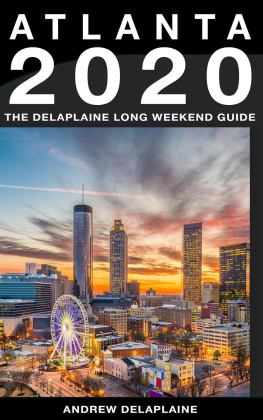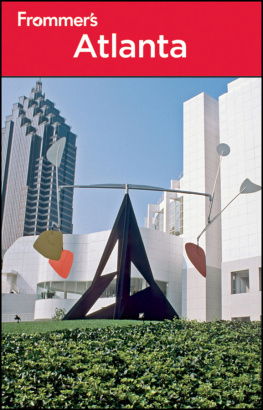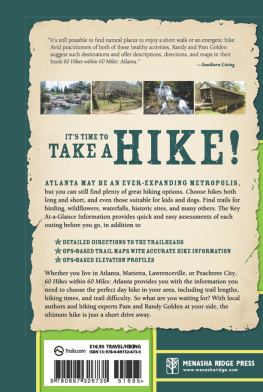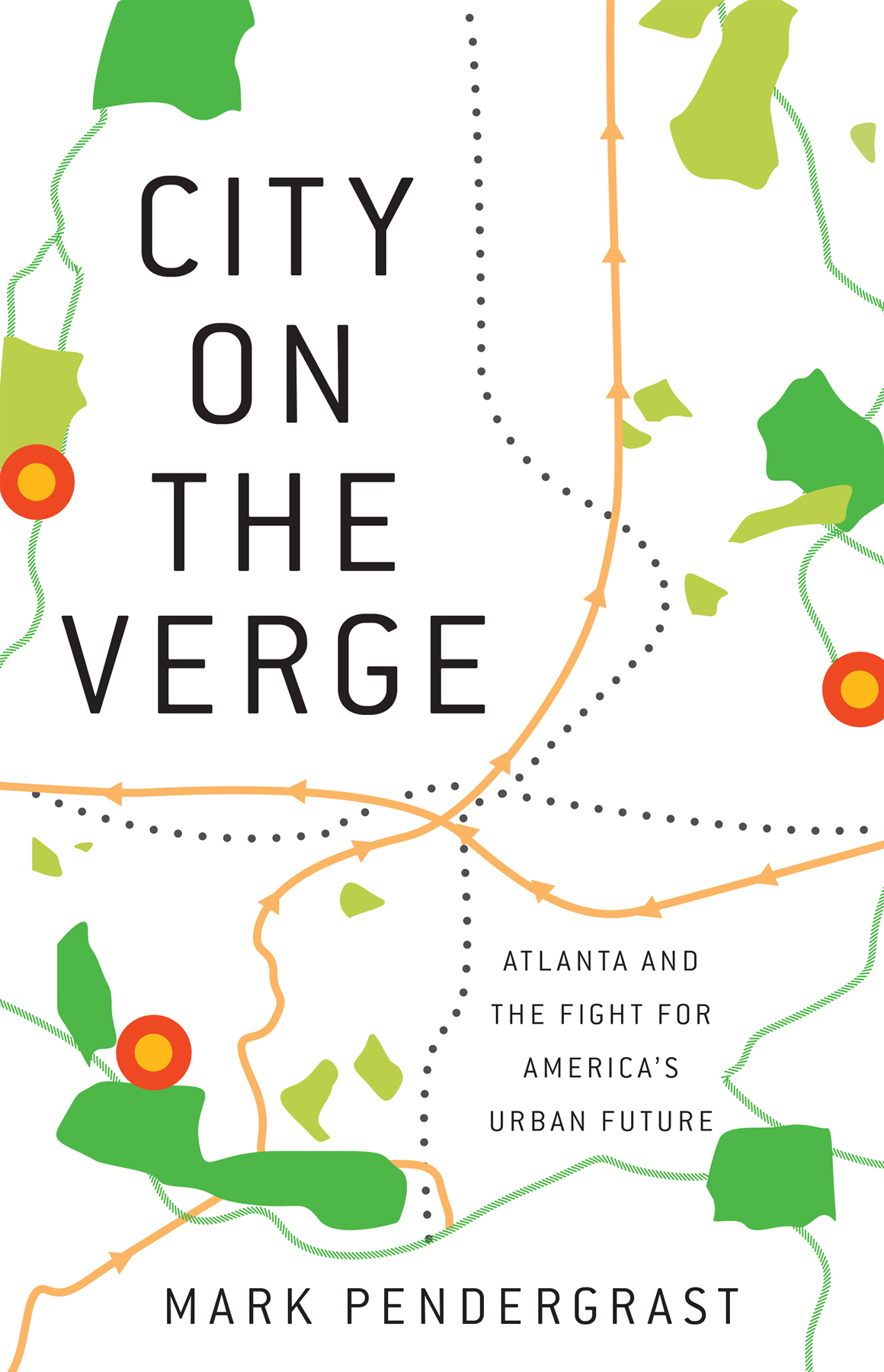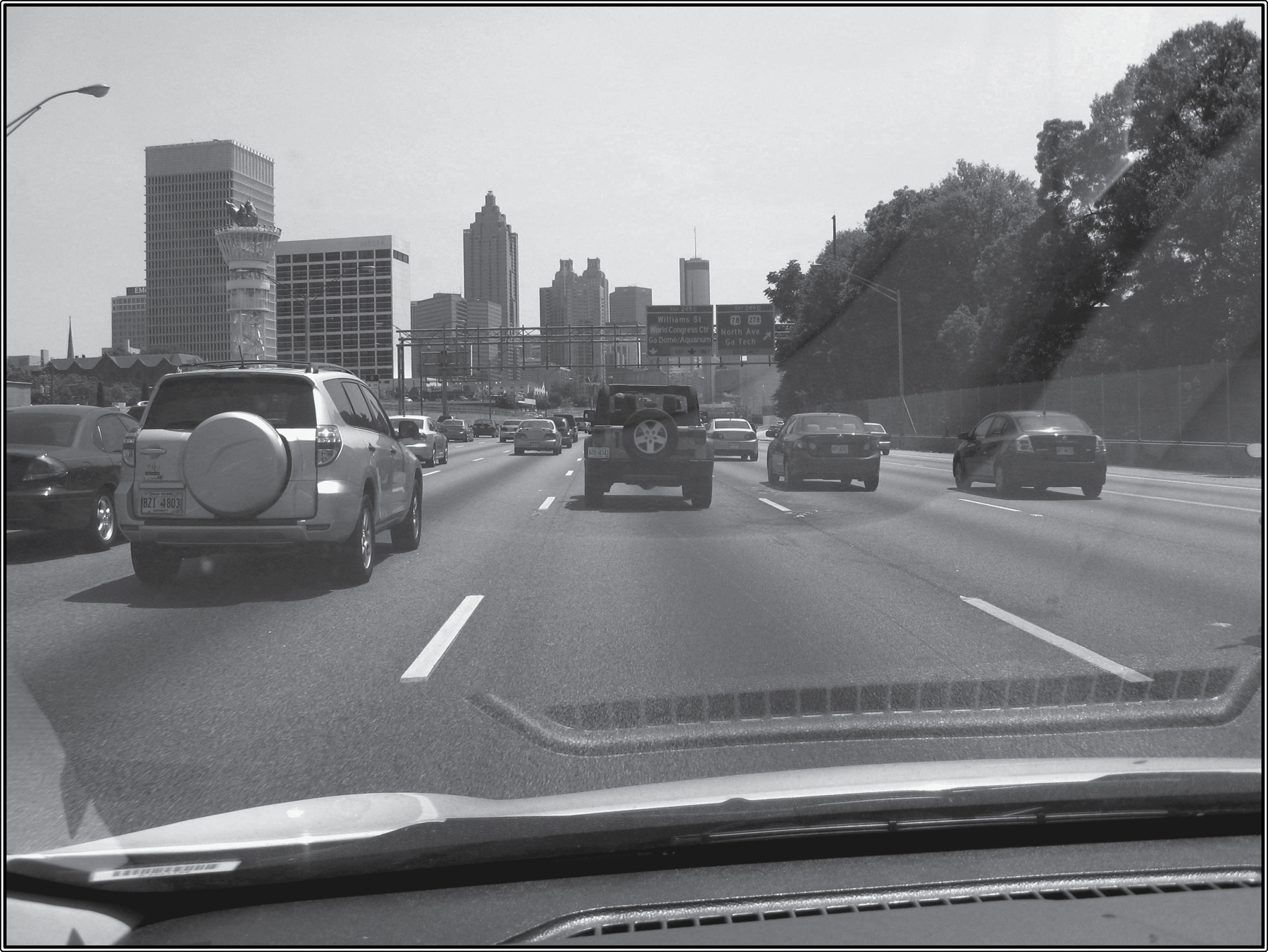Copyright 2017 by Mark Pendergrast
Published by Basic Books, an imprint of Perseus Books, LLC., a subsidiary of Hachette Book Group, Inc.
All rights reserved. No part of this book may be reproduced in any manner whatsoever without written permission except in the case of brief quotations embodied in critical articles and reviews. For information, address Basic Books, 1290 Avenue of the Americas, 4th floor, New York, NY 10104.
Books published by Basic Books are available at special discounts for bulk purchases in the United States by corporations, institutions, and other organizations. For more information, please contact the Special Markets Department at Perseus Books, 2300 Chestnut Street, Suite 200, Philadelphia, PA 19103, or call (800) 810-4145, ext. 5000, or e-mail special.markets@perseusbooks.com.
Designed by Jack Lenzo
Library of Congress Cataloging-in-Publication Data
Names: Pendergrast, Mark, author.
Title: City on the verge : Atlanta and the fight for Americas urban future / Mark Pendergrast.
Description: New York : Basic Books, [2017] | Includes index.
Identifiers: LCCN 2016039907| ISBN 9780465054732 (hardcover) | ISBN 9780465094981 (electronic)
Subjects: LCSH: Urban renewalGeorgiaAtlanta. | Community developmentGeorgiaAtlanta. | City planningGeorgiaAtlanta. |Urban policyGeorgiaAtlanta. | Social stratificationGeorgiaAtlanta.
Classification: LCC HT177.A77 P46 2017 | DDC 307.3/41609758231dc23
LC record available at https://lccn.loc.gov/2016039907
E3-20170406-JV-NF
MORE ADVANCE PRAISE FOR
CITY ON THE VERGE
Atlanta is creating something unique among American cities: a green network of more than twenty new or expanded parks occupying 1,300 acres, connected by multiuse trails and new transit lines, encircling the entire city and connecting forty-five neighborhoods. City on the Verge describes how this BeltLine, for which I prepared the initial master plan, overcame financing problems, litigation, power struggles, politics, property rights, and topographical reality, to become a major recreational resource that is already enhancing the daily life of tens of thousands of Atlantans.
Alexander Garvin, architect, city planner, and author of What Makes a Great City
In the late-twentieth century, metro Atlanta became the fastest growing human settlement in world history; the poster child of sprawl. With the building of the rail-and-trail BeltLine, it will once again lead the country, but toward a walkable urban future. Every metro area in the country will consider building a BeltLine. Mark Pendergrasts book is required reading to understand the future of metropolitan America.
Christopher Leinberger, metropolitan land use strategist and author of The Option of Urbanism
City on the Verge tells the story of the many Atlantans that are coming together through the creation of the Atlanta BeltLine. While this convergence is at times painful and uncomfortable, it is also long-overdue. Thanks to Mark Pendergrast for presenting his insightful observations about our past, our present, and the opportunity before us as we approach the future.
Michael Halicki, executive director, Park Pride
Atlanta is indeed a City on the Verge, as Mark Pendergrast observesit aspires to remake itself into a vital, sustainable, livable mecca. Pendergrast weaves together lessons in urban design, local politics, history, and human nature that pull the reader in like a mystery. His book reinforces the famous Margaret Meade quote about the ability of a small group of dedicated people to bring about change.
Dennis Creech, cofounder, Southface Energy Institute
For God, Country and Coca-Cola
Inside the Outbreaks
Uncommon Grounds
Beyond Fair Trade
Mirror Mirror
Victims of Memory
Japans Tipping Point
Childrens books:
Jack and the Bean Soup
Silly Sadie
The Godfool
To the memory of:
Willie Mae Pughsley (c. 19081975), otherwise known as Nee by the Pendergrast family
and
John Brittain (Britt) Pendergrast Jr. (19172016), my remarkable father, the epitome of a Southern gentlemankind, wise, smart, principled, humble, loving, and funny
This book is also dedicated to my equally remarkable mother, Nan Schwab Pendergrast (1920), compassionate, ever-curious nature-lover and environmentalist, human rights activist, and still my writing mentor and biggest supporter
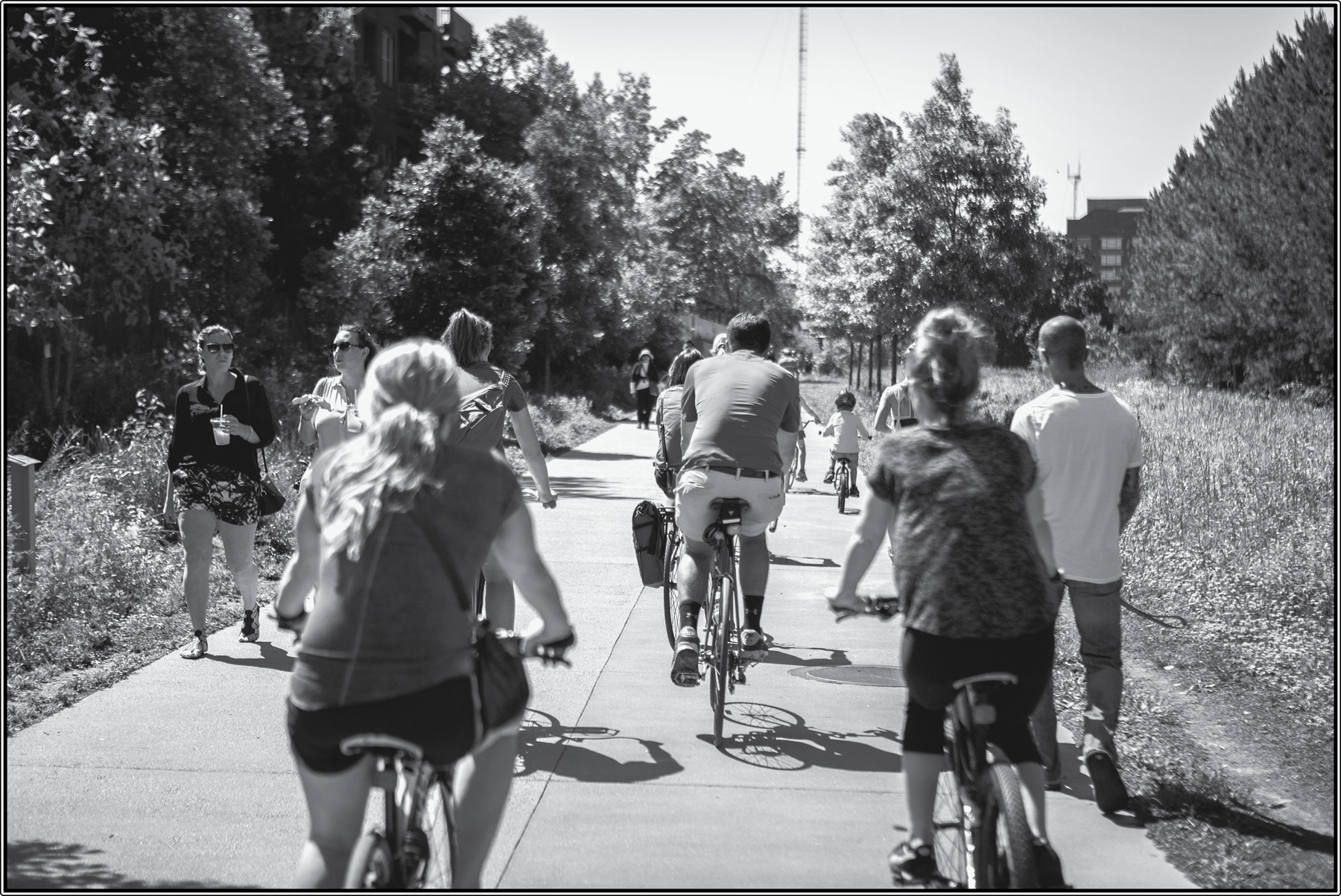
These two photosof traffic on I-75/85 and bikers on the BeltLinerepresent two sides of Atlanta.
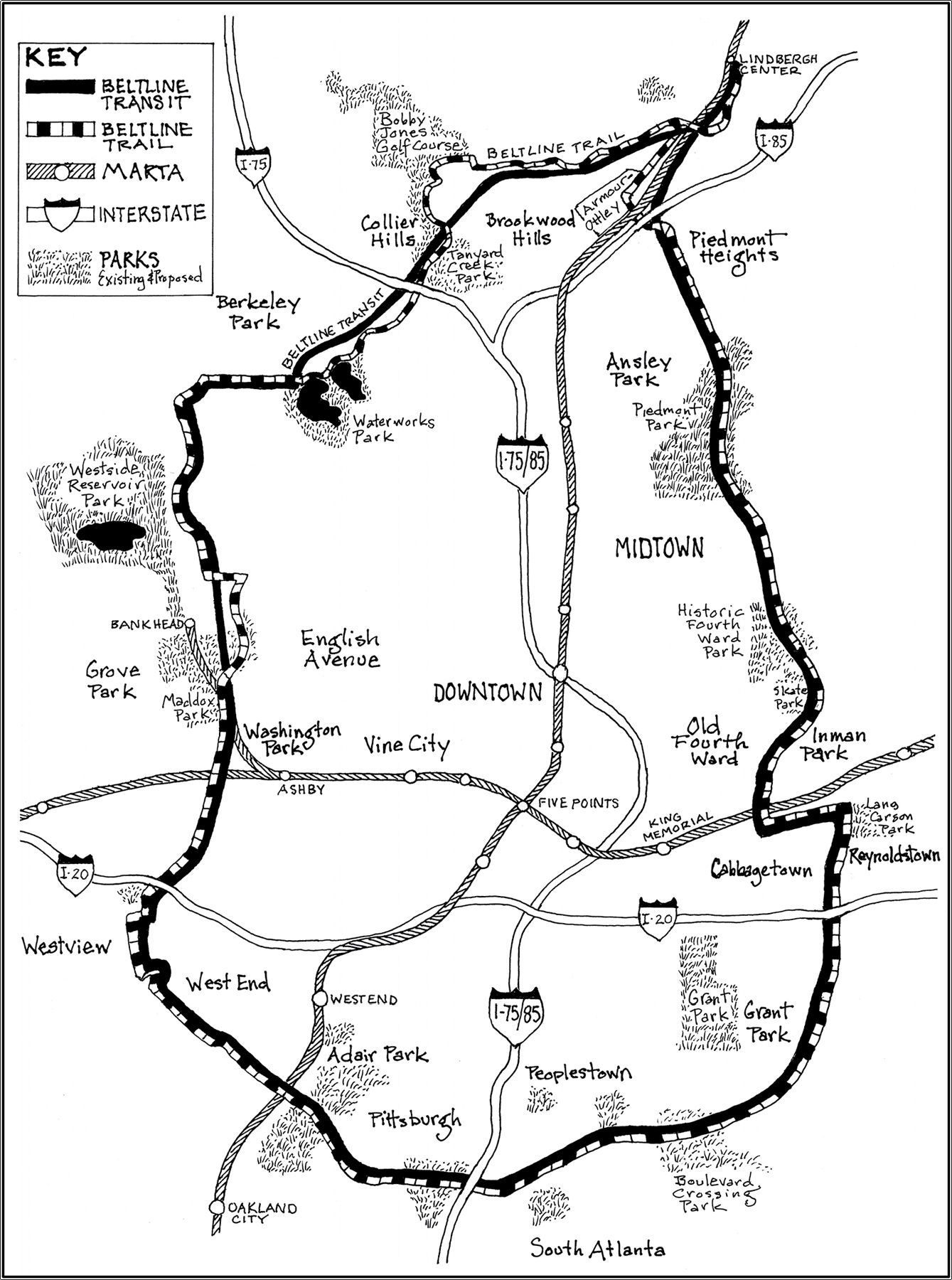
The Atlanta BeltLine. The black line is the twenty-two-mile planned streetcar corridor. The dotted line is the somewhat longer trail, which sometime departs from the corridor.
INTRODUCTION
ATLANTAS LIVABLE FUTURE
Atlanta is on the brink of either tremendous rebirth or inexorable decline. At the center of a perfect storm of failed American urban policies, Atlanta has the highest income inequality, and its metro area features the longest commutes, in the country; attempts at twentieth-century urban renewal blasted highways through the city center and destroyed neighborhoods; suburban sprawl impaired the environment even as it eroded the urban tax base and exacerbated a long history of racial injustice. Although many cities across America suffer these problems, the issues have collided nowhere so conspicuously as in Atlanta.
Consequently, Atlantas quest for reinvention maps onto Americas broader struggle to renew its cities: to transcend racism, segregation, and gaping economic divides, to transition from cars to public transit and walkable environments, to find new prosperity in the ruins of vanished industries. Having undergone an extraordinary transformation in recent decades, the city is now on the verge of emerging from its adolescence to become a grown-up city, with enough density to support a web of public transit, plenty of parks connected by multiuse trails, bike-friendly streets, and opportunities for people in the most troubled neighborhoods to break the cycle of intergenerational poverty. Yet Atlanta has been on the verge of something for most of its relatively brief history, and there is a real danger that the citys leaders will opt, once again, for image over fundamental change. Atlanta cannot afford to wait any longer; nor can the country.

The most promising symbol of the citys potential for rebirth is the Atlanta BeltLine. A twenty-two-mile ring of mostly defunct rail lines, running through forty-five neighborhoods girdling Atlantas downtown, the BeltLine is currently being transformed into a stunning pedestrian walkway and potential streetcar line. The projects backers hope that it will spur redevelopment, urban activism, community organizing, and environmental awareness. Many see it is a model for the next American city: walkable and accessible, diverse both economically and racially. Its success will reflect a remarkable turn of events, since the BeltLines rail beds once served to segregate the city by race. Yet, as with all massive social endeavors, the BeltLine has faced countless obstacles and fierce critiques, including from those who fear that the project will displace the citys poorer black residents with wealthier white ones.




